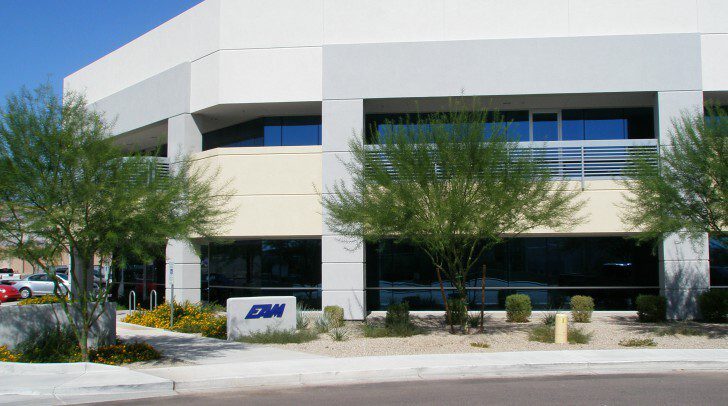First published in Flight Levels Online, Spring 2013 issue

Rob Louviaux has stats. Such as: 137 different Twin Commanders have passed through Executive Aircraft Maintenance (EAM) since Louviaux, a 22-year-veteran of Twin Commander maintenance, went to work there nine years ago as Aircraft Maintenance Manager. And another: EAM counts 48 Commander owners and operators from throughout the Western U.S., Mexico, and Canada as regular customers. And this: In 2012 EAM celebrated its 10th anniversary under new ownership, and in that time the company has grown to more than 120 employees.
EAM was founded in 2002 when recently retired Honeywell executive Jim Nordstrom, along with former Honeywell employees John Phoenix and Mike Croye, bought the maintenance portion of Executive Aircraft Services, which was based in the original FBO building on the southwest side of Scottsdale Airport (SDL). With Honeywell TPE331 Major Service Center authorization, their plan was to grow the business by concentrating on turboprop engine service and repair.
As the engine maintenance business began to blossom, so did the airframe work, aided by Twin Commander Service Center authorization and, according to Louviaux, the dedication and technical ability of Maintenance Supervisor Josh Woirhaye who, like Louviaux, has been with the company for nine years. “Josh keeps the numerous Commander projects on track and running smoothly,” Louviaux says.
The two sides of EAM’s expanding house – engine and airframe maintenance – continued to grow in tandem. EAM added Honeywell engine component repair, TFE731 and general aviation APU Line service authorization and, most significantly, TPE331 overhaul authorization. Meanwhile, EAM developed expertise in performing piston and turboprop Twin Commander inspections, repair, service bulletin compliance, and upgrades.
“We keep pretty busy,” Louviaux says. “Typically we have four Twin Commanders in the shop at any one time, but with Service Bulletin (SB) 241 and a couple of big projects we are working on, Hangar# 1 is full now with six Commanders, not to mention the weekly drop-ins we see on a regular basis.
“Our big projects encompass SB241 in conjunction with SB208A and SB223 inspections; Custom Kit upgrades; dual Dash Ten engine overhauls; new windshields; interior refurbishment; and an all-new instrument panel with the latest Garmin equipment and an Aspen flat-panel flight display for the copilot’s side.”
In its decade of existence EAM has expanded physically as well. In 2005 EAM moved its main offices to the northwest side of the airport into a 10,000-sq.-ft. hangar and 5,000 sq. ft. of back shop. In 2011 the company acquired a second 17,000-sq.-ft. hangar to accommodate the increase in avionics and turbofan business. 2013 saw the need for an additional building to support the Turbine Engine shop since the rapidly expanding machine shop pushed them out and across the street to a building located in Scottsdale Airpark.

Twin Commanders line up at 2009 University
An avionics shop was established in 2008 at the Scottsdale location, and then expanded to include complete panel refurbishments for a broad spectrum of piston- and turbine-powered aircraft. To date EAM has completed more than 550 panel refurbishments, prompting Garmin International to present the company with its Platinum Award for Sales Excellence in 2010, 2011, and 2012.
Avionics Manager Bill Forbes and his crew have performed panel upgrades for a number of EAM’s Commander customers. One recent project involved removing two of the four Sagem flat panels installed in a Commander JetProp, and replacing them with dual Garmin G600 displays, touch-screen GTN750 and GTN650 GPS systems, and a digital autopilot.
“We like to think of EAM as your one-stop Commander shop since we are capable of aircraft maintenance, heavy structural repairs and mods, avionics repair and install, paint and interior and, since we are a Honeywell TPE331 service center, we can take care of your engines all the way to overhaul,” Louviaux says.

EAM maintenance hangar is busy with service bulletin compliance projects, upgrades, inspections, engine work, and avionics retrofits.
EAM has expanded beyond Scottsdale as well. In 2005 it opened a satellite facility at the Ted Stevens Anchorage, Alaska, Airport (ANC) that specializes in Honeywell engine maintenance. In 2011 EAM acquired the FBO at Glendale Municipal Airport and re-named it Glendale Aero Services (GAS). The 11,000-sq.-ft. facility is an approved Cessna, Aviat Husky, and Cirrus Aircraft Service Center with avionics and turbine aircraft support. Prompted by the need to better serve its growing turbofan customers, EAM established a maintenance base at Phoenix Sky Harbor in 2012 working in association with Swift Aviation at its facility.
“We pride ourselves on being innovative, creative, and aggressive towards providing our customers with the best possible value, product integrity, and the lowest cost of maintenance by utilizing factory parts and in-house repairs,” says EAM President Jim Nordstrom.
For more information visit EAM’s website at www.eamaz.com, or call 480-991-0900 or 866-991-0905; fax: 480-991-3067. The company’s address is Executive Aircraft Maintenance, Inc., Scottsdale Municipal Airport, 8014 E. McClain Drive #135, Scottsdale, AZ 85260.
